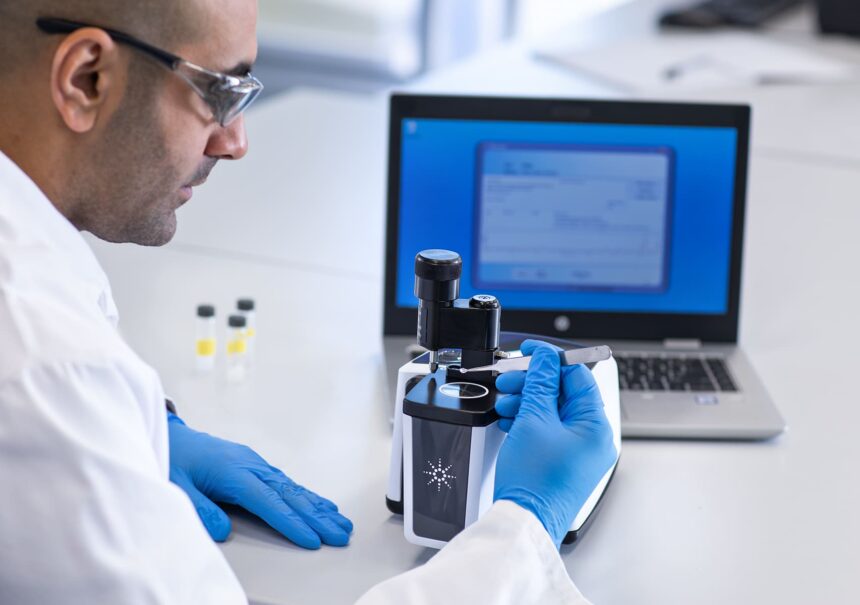The correct selection of an instrument in a rapidly changing scientific world may transform your entire research. It may pose a big problem to you when faced with these fast-growing advances in spectroscopy techniques and instruments, thus making the buying process intimidating.
Worry less and this article will take you through finding the right molecular spectroscopy for you that will lead to better research results.
Understanding Molecular Spectroscopy
One of the most powerful analytic techniques can yield information about the molecule’s structure, composition, and properties by analyzing how they interact with light. UV-Vis, Infrared, Nuclear Magnetic Resonance, and Raman spectroscopy are some of the common types of Molecular spectroscopy instruments.
These instruments form the basis for the identification and quantification of molecules, molecular interactions, and complex systems at the molecular level.
3 Types of Molecular Spectroscopy Instruments
1. UV-Visible Spectrophotometers
These are devices that measure the extent of light absorption or multiple molecule transmission within the ultraviolet and visible parts of the electromagnetic spectrum. UV- Vis spectrophotometers examine what proportion of a specified wavelength’s light is absorbed in order to determine the concentration of certain analytes in samples as well as identify substances.
2. Infrared Spectrometers
It is developed to measure IR radiation absorption or reflection by different molecules, which causes the vibrational modes to be addressed in these instruments. These describe the functional groups of a molecule, its structure, and the intermolecular interactions present in the sample.
3. Nuclear Magnetic Resonance Spectrometers
Just like a probe for the chemical structure and dynamics of a molecule, it is based on exploiting magnetic properties in atomic nuclei. It is said to be concerned with the connectivity, conformation, and interplay of molecules at a molecular level.
4. Raman Spectrometers
Measures the inelastically scattered light from molecules also known as the Raman effect. The technique provides information about vibrational, rotational, and other low-frequency modes of molecules.
It offers the identification and characterization of vast materials ranging from small organic compounds to polymers and inorganic materials.
5 Important Considerations to Know
1. Specific Application Requirements
Know what is the objective of your research and the respective applications where the instrument will be used. The key to obtaining valid and accurate results is proper matching between the instrument capabilities and application needs.
2. Instrument Performance and Specifications
This is an important consideration for the accuracy, precision, wavelength range, resolution, and signal-to-noise ratio. These specifications have a bearing on the quality and reliability of your data.
3. Ease of Use and User Interface
The software and interface user-friendliness of the instrument are deciding factors for how efficient and productive the instrument will be on your research team. Consider researching the manufacturer’s available training resources and technical support for a smoother learning curve and support for your team.
4. Cost and Budget
Value for your money is not only about how low the cost is, but it’s about its long-term value and payback on investments. Consider operational and maintenance costs such as consumables, service contracts, and energy usage.
5. Manufacturer Reputation and Support
Look for manufacturers that have built credible histories of quality, innovation, and customer satisfaction. A manufacturer whose quality is reliable and finds it necessary to give the best support ensures long-term performance and value for the money.
Invest in the Right Instrument Today!
The proper choice of instrument is therefore one of the most critical decisions you are likely to make for your research in terms of success and productivity. Through careful research, you can confidently select the right instrument that will be your partner when seeking scientific excellence.






